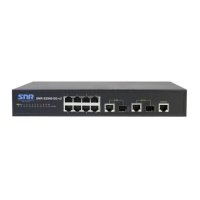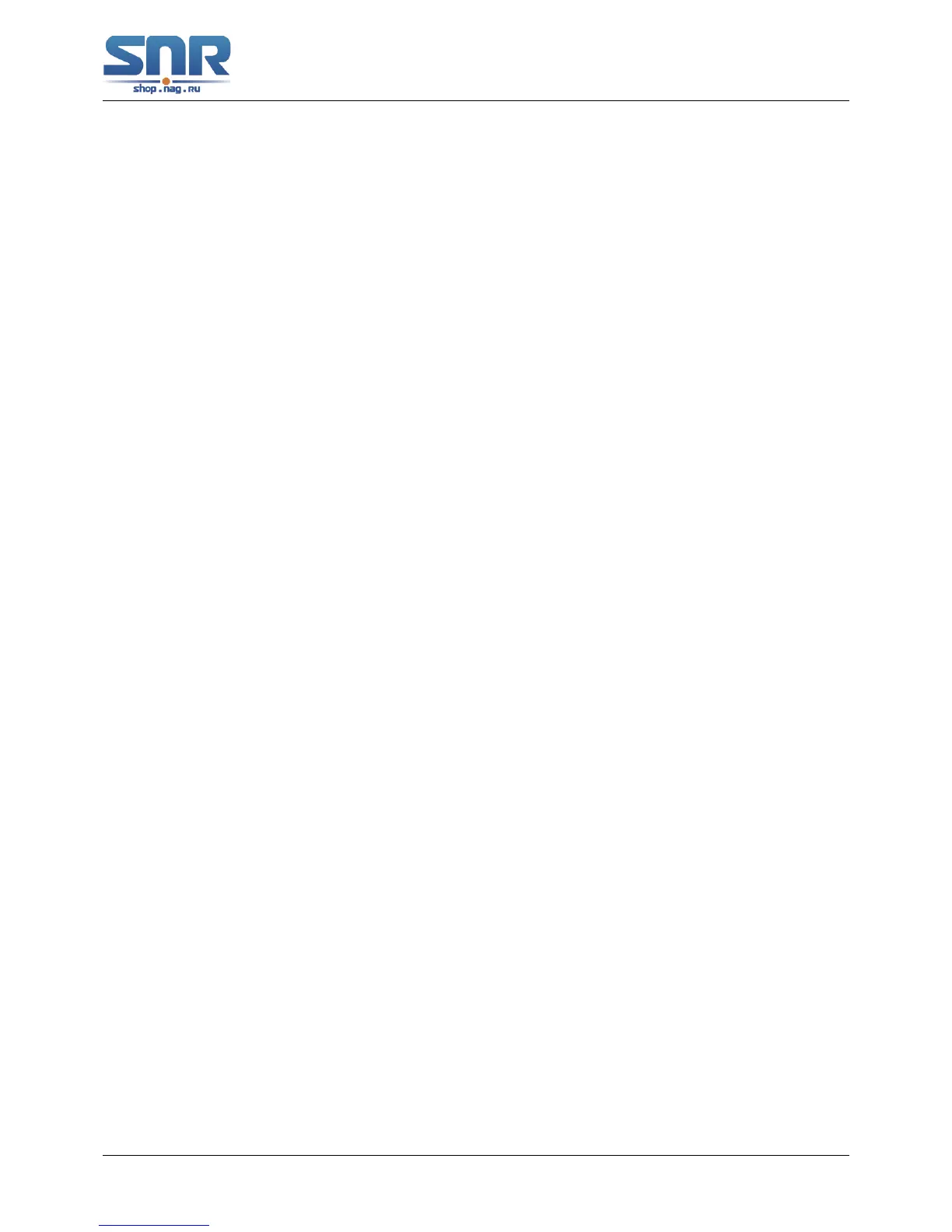SNR S2940-8G-v2 Switch Configuration Guide
Flexible QinQ Configuration
Chapter 28
Flexible QinQ Configuration
28.1 Introduction to Flexible QinQ
28.1.1 QinQ Technique
Dot1q-tunnel is also called QinQ (802.1Q-in-802.1Q), which is an expansion of 802.1Q. Its domi-
nating idea is encapsulating the customer VLAN tag (CVLAN tag) to the service provider VLAN tag
(SPVLAN tag). The packet with two VLAN tags is transmitted through the backbone network of
the ISP internet to provide a simple layer-2 tunnel for the users. It is simple and easy to manage,
applicable only by static configuration, and especially adaptive to small office network or small
metropolitan area network using layer-3 switch as backbone equipment.
There are two kinds of QinQ: basic QinQ and flexible QinQ, the priority of flexible QinQ is higher
than basic QinQ.
28.1.2 Basic QinQ
Basic QinQ based the port. After a port configures QinQ, whether the received packet with tag or
not, the device still packs the default VLAN tag for the packet. Using basic QinQ is simple, but the
setting method of VLAN tag is inflexible.
28.1.3 Flexible QinQ
Flexible QinQ based data flow. It selects whether pack the external tag and packs what kind of
the external tag by matching the material flow. For example: implement the property of flexible
QinQ according to the user's VLAN tag, MAC address, IPv4/IPv6 address, IPv4/IPv6 protocol
and the port ID of the application, etc. So, it can encapsulate the external tag for the packet and
implements different scheme by different users or methods.
28.2 Flexible QinQ Configuration Task List
The match of flexible QinQ data flow uses policy-map rule of QoS to be sent, the configuration
task list is as follows:
1. Create class-map to classify different data flows
195

